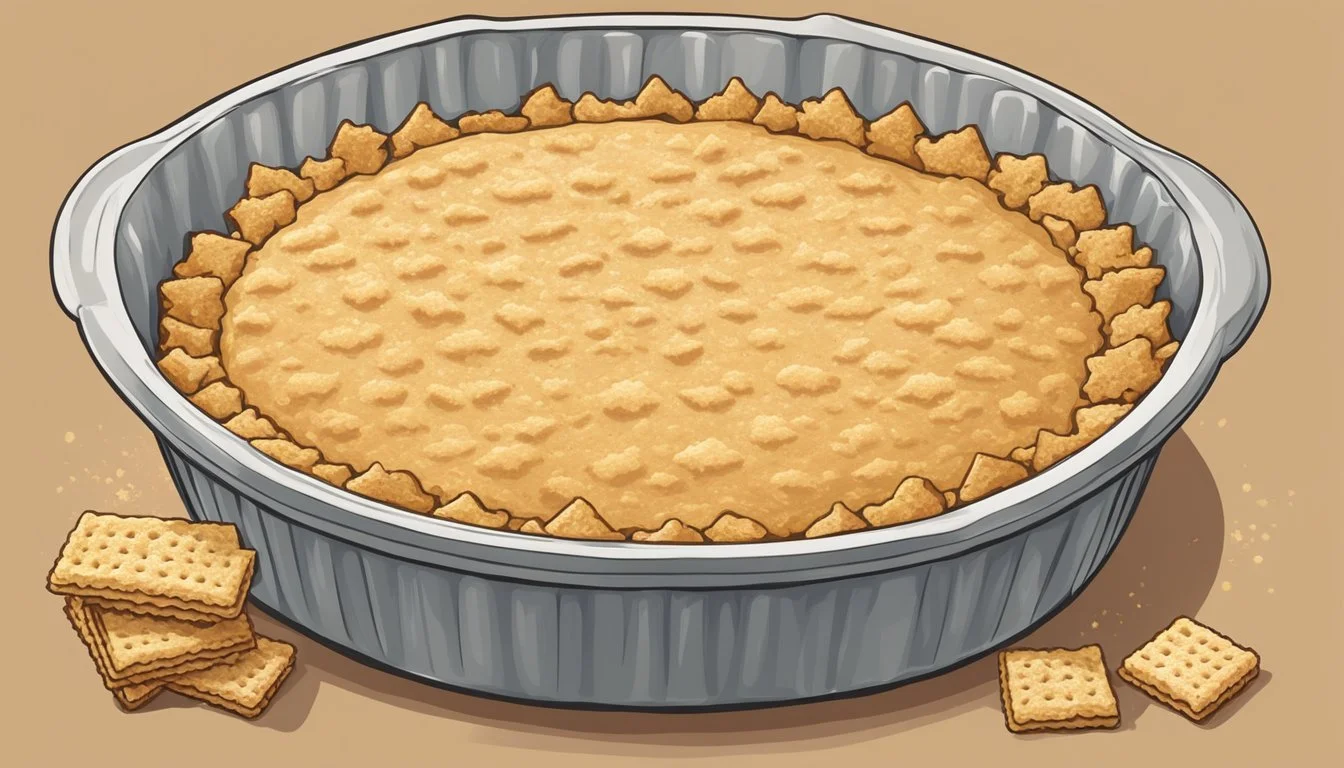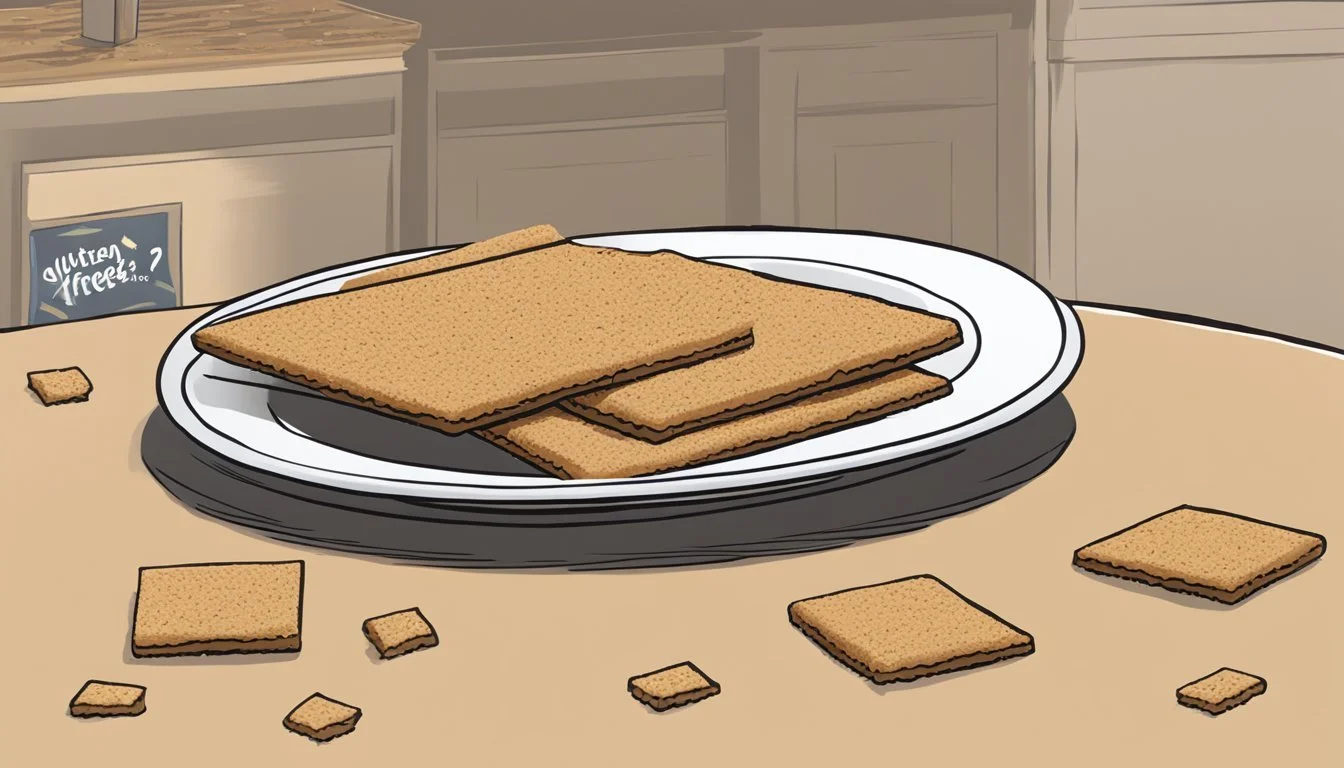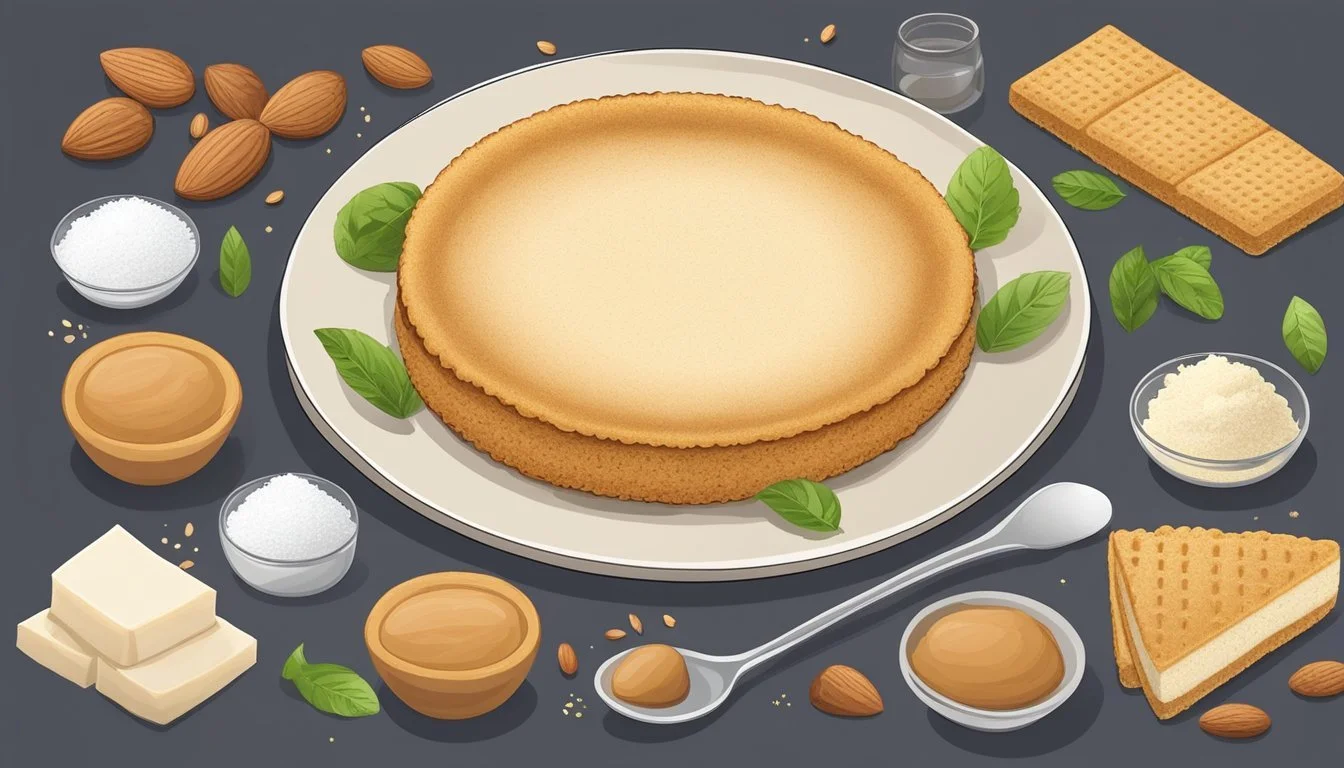Are Graham Cracker Crusts Gluten-Free?
Understanding Their Ingredients
Graham cracker crusts are a staple in many classic dessert recipes, from cheesecakes to key lime pies. However, traditional graham crackers are made with wheat flour, which contains gluten, making the crusts unsuitable for those with gluten sensitivities or celiac disease. Fortunately, with the rising awareness of gluten-related health concerns, many alternatives have been developed to cater to the need for gluten-free options.
Particularly, gluten-free graham cracker crusts have gained popularity, allowing those following a gluten-free diet to enjoy the same textures and flavors that a classic graham cracker crust provides. These crusts typically substitute wheat flour with gluten-free alternatives such as a blend of rice flour, almond flour, or gluten-free oats. Additionally, some recipes include ingredients like brown sugar and cinnamon to mimic the taste and aromatic qualities of traditional graham crackers.
Creating a gluten-free graham cracker crust at home can be as simple as combining gluten-free graham cracker crumbs with a binding ingredient like butter or a butter substitute. Pre-made gluten-free crusts are also available in stores for convenience. Whether for dietary requirements or personal preference, gluten-free graham cracker crusts offer an accessible and delicious base for a plethora of desserts without compromising on taste or texture.
Understanding Gluten-Free
In discussing gluten-free diets and products, clarity around definitions and health implications is crucial, particularly when considering gluten-free graham cracker crusts as a part of the diet.
Defining Gluten-Free Products
Gluten-Free Products are those that do not contain the protein gluten, which is found in grains such as wheat, barley, and rye. For a product to be labeled as gluten-free, it must meet regulatory standards, which typically specify that it contains less than 20 parts per million (ppm) of gluten. Gluten-free graham crackers, for instance, are made from alternative flours or grains that naturally do not contain gluten.
Importance for Health and Dietary Restrictions
A gluten-free diet is essential for individuals with celiac disease or gluten sensitivity, as consumption of gluten can lead to severe health issues for these individuals. Adhering strictly to a gluten-free diet helps in managing symptoms and preventing long-term complications. Even for those without specific medical conditions, a gluten-free diet is sometimes chosen for its perceived health benefits. Gluten-free graham cracker crusts provide a safe option for those needing or choosing to avoid gluten while still enjoying a range of culinary dishes.
Components of Graham Cracker Crusts
Traditional graham cracker crusts combine simplicity with a rich flavor profile integral to many desserts. With just a few basic components, they serve as the foundation for pies, cheesecakes, and bars.
Common Ingredients in Traditional Graham Cracker Crusts
Graham Crackers: Traditional crusts begin with graham cracker crumbs, which provide a distinctive sweet and slightly nutty taste. Butter: Melted butter is a vital ingredient, acting as the binding agent that holds the crumbs together. Sugar: Most recipes add granulated sugar to the graham cracker crumbs for added sweetness.
Substituting Ingredients for Gluten-Free Crusts
Gluten-Free Graham Crackers: For a gluten-free crust, one starts with gluten-free graham cracker crumbs, maintaining the traditional flavor without the gluten. Gluten-Free Flour: Some recipes may suggest adding gluten-free flour to help bind the crust, depending on the texture and consistency desired. Substitutions: Common substitutions for butter, to cater to dietary needs, include dairy-free alternatives like plant-based butter. Sugar substitutions often include natural sweeteners or brown sugar for a deeper flavor.
Preparing Gluten-Free Crusts
To make a gluten-free graham cracker crust that rivals traditional ones, one must focus on achieving the right texture and stability. Precise mixing techniques and the correct balance of ingredients are crucial.
Creating the Perfect Gluten-Free Graham Cracker Mixture
For gluten-free graham cracker crusts, the mixture starts with gluten-free graham cracker crumbs. These can be purchased or made by processing gluten-free graham crackers in a food processor until fine crumbs are formed. The crumbs should have a sandy texture, ensuring they can bind well once mixed with other ingredients. Typically, sugar is added for a hint of sweetness and to enhance the flavor. Here is a basic ratio for the dry ingredients:
1 and 1/2 cups of gluten-free graham cracker crumbs
1/4 cup of sugar
Gluten-free flour or quick oats can be included in the mix for additional binding properties.
Techniques for Mixing and Compactness
It is essential to distribute the melted butter evenly through the crumbs to achieve uniform compactness and prevent a crumbly crust. For every 1 and 1/2 cups of crumbs, about 6 tablespoons of butter is melted and then mixed in. The resulting mixture should be moist enough to stick together when pressed but not so wet that it becomes greasy.
To effectively combine the mixture, one can use a fork or a pastry cutter. Once combined, the crumbs should be pressed into the pie pan evenly. The back of a measuring cup or a rolling pin can be employed to compact the crumbs firmly into place to form a solid crust. For best results, start by pressing the mixture up the sides and then into the bottom of the pan, ensuring an even distribution of the crust.
Baking and No-Bake Methods
Choosing between baking and no-bake methods depends on the desired texture and time available for making a graham cracker crust. A baked crust often yields a crispier texture and richer flavor, while a no-bake crust provides convenience and quick preparation time.
Honing the Baking Technique for Crispy Crusts
The process of baking a graham cracker crust starts with preheating the oven to 350°F. A well-combined mixture of graham cracker crumbs, sugar, and melted butter should resemble wet coarse sand for optimal texture. Pressing the mixture evenly into the pan, the crust should be baked for approximately 8-10 minutes or until it achieves a fragrant and lightly browned appearance. The baked crust must then cool briefly before any filling is added.
No-Bake Options for a Quick Dessert Base
For a no-bake crust, the graham cracker crumbs are mixed with sugar and melted butter to achieve a similarly moistened consistency. The crust is then firmly pressed into the pie pan and instead of baking, it is placed in the refrigerator to chill and set. To expedite the setting process, the crust can be placed in the freeze for a shorter period. A no-bake crust provides a softer texture and is an excellent option for those looking to save time or avoid using an oven.
Gluten-Free Graham Cracker Crust Recipes
Gluten-free graham cracker crusts offer a delicious base for a variety of desserts, and they can often be made vegan or dairy-free to accommodate dietary needs. By choosing the right ingredients, one can recreate the classic texture and taste, ensuring nobody misses out on a favorite pie experience.
Classic Gluten-Free Graham Cracker Crust
For those seeking to replicate the traditional graham cracker crust without the gluten, using gluten-free graham crackers is key. To make a classic gluten-free graham cracker crust, the process typically involves:
Crushing the gluten-free graham crackers into fine crumbs using a food processor or blender.
Mixing the crumbs with melted butter (or a dairy-free alternative for a vegan option), and a binder like brown sugar to add a touch of sweetness and help solidify the crust.
Pressing the mixture firmly into the bottom of a pie pan and slightly up the sides to create an even layer.
Baking the crust typically at around 350°F (177°C) for 8-10 minutes, or chilling it if making a no-bake dessert.
Ingredients for a single 9-inch pie crust may include:
1 1/2 cups of gluten-free graham cracker crumbs
1/3 cup of melted butter or coconut oil (for a dairy-free version)
1/4 cup of brown sugar
The simplicity of this recipe allows for an easy yet satisfying finish to any dessert that calls for a classic graham cracker crust.
Innovative Twists on the Traditional Recipe
The traditional gluten-free graham cracker crust can be easily modified to add a twist or to accommodate additional dietary restrictions. Here are some innovations:
Flavors: Incorporating ingredients such as cinnamon or vanilla extract can enhance the taste.
Binders: Those avoiding refined sugars might opt for alternatives like maple syrup or agave nectar.
Texture: Ingredients like gluten-free flour or quick oats can be added to the food processor along with the graham cracker crumbs to alter the final texture of the crust.
To create a more unique crust, one might consider adding:
A pinch of spice, such as cinnamon or nutmeg, for a warm flavor profile.
Blending in a handful of nuts like pecans or almonds for added crunch and nutrition.
Sample Ingredients for an innovative crust might be:
1 1/2 cups of gluten-free graham cracker crumbs
1/3 cup of gluten-free flour or quick oats
1/4 cup of brown sugar (or a sugar alternative)
1/2 teaspoon ground cinnamon (optional)
1/2 cup of melted dairy-free butter or margarine for a vegan twist
By experimenting with these modifications, chefs can create a variety of crusts that accommodate a range of tastes and dietary needs.
Pie Assembly and Filling Tips
Creating a gluten-free graham cracker crust pie requires careful selection of fillings and mastery of assembly techniques to ensure a pie that is both delicious and structurally sound. This section offers insights into how to pair the crust with the right fillings and the best practices to follow for pie assembly.
Pairing the Crust with Suitable Fillings
The taste and texture of gluten-free graham cracker crust are versatile, making it compatible with a range of fillings. When considering a filling for a cheesecake or pie, select one that complements the subtly sweet and dense crust. Fruit-based fillings, like citrus or berry, add a refreshing contrast, while richer options, such as chocolate or vanilla cream, enhance the crust's flavors without causing sogginess.
Light Fillings: Lemon curd, fresh fruit compote
Rich Fillings: Cream cheese for cheesecake, chocolate ganache
For best results, prep the filling ahead of time to ensure it's ready to add to the crust without delay, as this helps maintain the crust's crispness.
Assembly Techniques for a Perfect Pie
When it comes to assembling a pie, the key lies in a solid foundation. Use these techniques for optimal results:
Even Crust Distribution: Press the crumbs evenly into the bottom and up the sides of a pie pan, using a flat-bottomed measuring cup or glass to achieve a uniform layer. This consistency is crucial for even baking and textural balance with the filling.
Chill Before Filling: To prevent the crust from becoming soggy when introducing moist fillings, chill the empty crust after shaping it in the pan. This period solidifies the butter, which acts as a barrier upon adding the filling.
Bake if Required: Some fillings, such as custards or pumpkin pie mix, require that the crust be pre-baked. Follow the recipe's specifics on temperature and prep time for pre-baking.
By following these pie assembly tips, one ensures that their gluten-free graham cracker crust provides the perfect foundation for a variety of fillings, resulting in a pie that is as structurally sound as it is delightful to taste.
Storage and Preservation
Proper storage is essential for maintaining the quality and freshness of gluten-free graham cracker crusts. Whether one is preparing crusts in advance or saving leftovers, understanding the best practices can make a significant difference in taste and texture.
Storing Your Gluten-Free Crusts for Freshness
To ensure that a gluten-free graham cracker crust stays fresh, it should be stored correctly. If one has a fully assembled but unfilled crust, it can be kept at room temperature for a day. For short-term storage, tightly wrap the crust in plastic wrap or aluminum foil to prevent it from drying out. For longer storage, refrigerating the crust is recommended. Here's a quick reference table:
Condition Storage Method Duration Unfilled, at room temperature Wrapped in plastic to prevent drying Up to 24 hours Unfilled, refrigerated Wrapped in plastic or sealed in airtight container 2-3 days Filled, refrigerated Covered with plastic wrap or in an airtight container According to the filling's shelf life
When refrigerated, filled crusts' shelf life largely depends on the filling's perishability, where dairy or egg-based fillings will require consumption within a day or two for best quality.
Making Crusts Ahead for Convenience
Gluten-free graham cracker crusts can also be made ahead of time to save on future preparation efforts. For those planning ahead, crusts can be tightly wrapped with plastic wrap and then covered with foil to protect against freezer burn before being frozen. Key freezing tips include:
Labeling: Always mark the wrapping with the date to ensure usage within an optimal timeframe.
Thawing: To use, thaw the crust slowly in the refrigerator to maintain consistency.
When properly stored, a gluten-free graham cracker crust can be frozen for up to three months. One can bake or prepare crusts in batches and freeze them, thus having them readily available for quick assembly of desserts. Notably, no-bake crusts should also be frozen unwrapped initially for an hour to set, then wrapped and returned to the freezer.
By following these guidelines, one ensures that their gluten-free graham cracker crusts are preserved correctly for both immediate and future use, maintaining their crispy texture and flavor.
Gluten-Free Dessert Variations
When opting for gluten-free dessert options, the versatility of gluten-free graham cracker crusts allows home bakers and chefs to recreate a wide array of traditional desserts without compromising on taste or texture.
Varieties of Desserts Utilizing Gluten-Free Crust
Gluten-free graham cracker crusts are the foundation for numerous dessert variants. They provide the perfect base for pudding pies and tarts, offering a satisfying crunch and sweetness. One can easily prepare a gluten-free pumpkin pie by using these crusts, especially during fall seasons when this classic dessert is in high demand. Similarly, a key lime pie with a gluten-free graham cracker crust can deliver the expected tangy flavor encapsulated in a crumbly, delicious shell. These crusts are not limited to pies; they also adapt well to cheesecake bases or can be crumbled as a topping for yogurt or ice cream parfait layers.
Pudding Pie
Use as a base for chocolate or vanilla pudding mixtures.
Tart Pan Creations
Ideal for fruit tarts or lemon curd-filled desserts.
Gluten-Free Key Lime Pie
Maintain the classic taste with a gluten-free crust alternative.
Gluten-Free Pumpkin Pie
A must-have for a gluten-free Thanksgiving spread.
Adapting Classic Pie Recipes to Gluten-Free
Adaptation of classic pie recipes to a gluten-free format is straightforward with gluten-free graham cracker crusts. Many beloved pie recipes can be modified by simply replacing the traditional crust with a gluten-free alternative. Whether one follows a family recipe for apple pie or explores new recipes for blueberry or pecan pies, the substitution process involves just the crust, ensuring that the filling remains unchanged and authentic.
Gluten-Free Desserts
Modifications are limited to the crust, retaining original flavors in the filling.
Pie Recipes
Diverse pies like apple, cherry, or chocolate can all be made gluten-free with crust replacements.
Using gluten-free graham cracker crusts, dessert enthusiasts can continue to enjoy their favorite treats without the presence of gluten, making indulgence accessible and delicious for those with dietary restrictions.
Frequently Asked Questions
In this section, readers will find authoritative answers to common queries related to gluten-free graham cracker crusts and how to cater to diverse dietary restrictions while baking.
Addressing Common Concerns About Gluten-Free Baking
Q: Are traditional graham cracker crusts gluten-free?
A: No, traditional graham cracker crusts are not gluten-free as they are typically made from graham flour, which contains gluten.
Q: What is used to bind gluten-free graham cracker crusts if not gluten?
A: Gluten-free baking often relies on binders like xanthan gum to replace the elasticity and texture that gluten provides.
Substituting Other Ingredients for Varied Dietary Needs
Q: Can vegan butter be used in a gluten-free graham cracker crust?
A: Yes, vegan butter can be an effective dairy-free substitution in gluten-free crusts, providing similar results to traditional butter.
Q: Are there other dairy-free options for making gluten-free crusts?
A: Indeed, other dairy-free alternatives, such as coconut oil or margarine, can be used as substitutions in gluten-free crust recipes.
Conclusion
Traditional graham cracker crusts typically contain gluten, as they are made from graham flour, which is a type of wheat flour. However, gluten-free alternatives are readily available. One can find gluten-free graham crackers in many grocery stores or online markets. These can be crushed and combined with a binding agent like melted butter or oil to create a gluten-free crust.
A gluten-free graham cracker crust can be made from scratch using ingredients such as gluten-free flour, quick oats, and brown sugar. Additionally, alternative options such as nut-based crusts, coconut crusts, or those made with gluten-free flour blends offer versatility for those aiming to avoid gluten.
For individuals with celiac disease or gluten sensitivity, it is crucial to read labels and ensure that all ingredients are certified gluten-free. Cross-contamination can be a concern, so one must ensure that the graham crackers and additional ingredients, as well as the preparation tools and area, are free of gluten-containing substances.
In conclusion, it is indeed possible for individuals on a gluten-free diet to enjoy dishes requiring a graham cracker crust. With numerous recipes and premade options available, one can approach baking with confidence, secure in the knowledge that their dietary needs are met without compromising on taste or texture.









